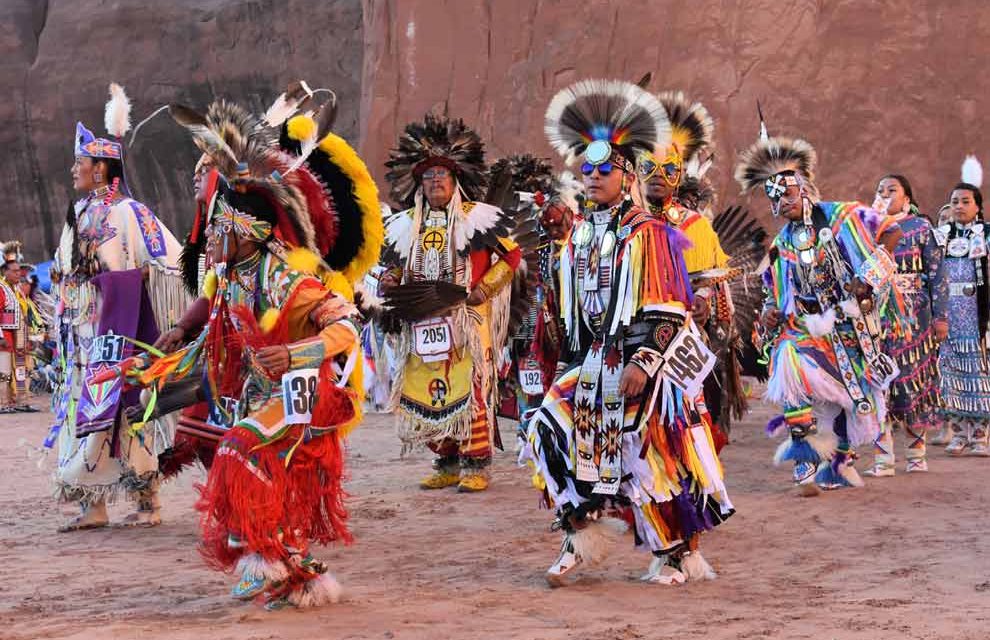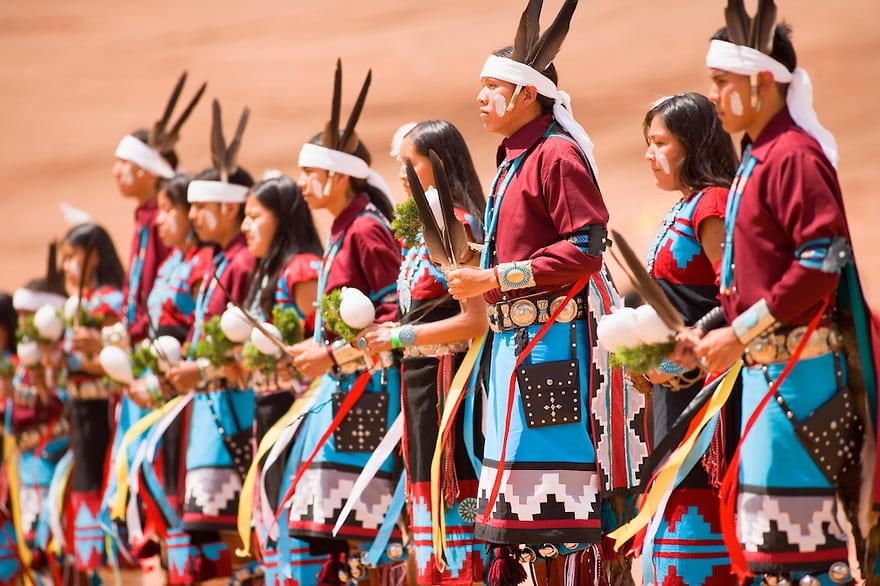
Sacred Pathways: Navigating New Beginnings Through Navajo Ceremonies
In the vast, resonant landscape of the Navajo Nation, where ancient canyons whisper stories to the wind and the sun paints the mesas in hues of profound beauty, life’s transitions are not merely marked but consecrated. For the Diné, the People, new beginnings are not simply calendar events or personal milestones; they are sacred opportunities to re-establish Hózhó – a state of harmony, balance, and beauty that underpins all existence. Through an intricate tapestry of ceremonies passed down through generations, the Navajo guide individuals and communities through life’s profound shifts, ensuring that each new chapter is entered with grace, purpose, and a deep connection to the spiritual world.
These ceremonies are not static rituals but living, evolving expressions of a worldview that sees the interconnectedness of all things. They serve as spiritual compasses, orienting individuals within their families, their community, and the cosmic order. From the first stirrings of life to the momentous journey into adulthood, and the establishment of new homes, the Diné tradition offers a ceremonial pathway designed to bless, protect, and empower.
The Kinaalda: Stepping into Womanhood
Perhaps one of the most widely recognized and profoundly significant Navajo ceremonies for a new beginning is the Kinaalda, the girls’ puberty rite. This multi-day event marks a young woman’s transition from girlhood to womanhood, embodying the transformative power of Changing Woman (Asdzáá Nádleehé), the revered deity who represents fertility, growth, and the cyclical nature of life. The ceremony is not just a celebration; it is an intensive training period, physically and spiritually, preparing the young woman for her future roles as a mother, wife, and contributor to her community.
During the Kinaalda, the Kinaaldá (the girl being honored) undergoes a series of symbolic actions. She grinds corn, a laborious task that teaches endurance and the traditional skills of providing for a family. She runs long distances each morning, symbolizing strength, vitality, and the ability to outrun illness and misfortune. Her hair is tied in a traditional bun by an elder, signifying her readiness for womanhood. A central ritual involves a "molding" process, where an elder gently presses and shapes the girl’s body, imbuing her with the strength and beauty of Changing Woman herself. This act is believed to bless her with good health, a strong back, and the capacity for motherhood.

The ceremony culminates in an all-night sing, where sacred songs are sung to bless the girl and the community. The Kinaalda is a powerful affirmation of identity and purpose. "It is where we learn what it means to be a Diné woman," an elder might explain, "to be strong like the mountains, nurturing like the earth, and resilient like the sacred corn." It reinforces cultural values, strengthens family bonds, and ensures the continuation of the Diné way of life, welcoming a new generation of women ready to carry forward their heritage.
A’wee Chi’deedlix: The Baby’s First Laugh Ceremony
Another beautiful ceremony marking a new beginning is the A’wee Chi’deedlix, the Baby’s First Laugh Ceremony. This event, simple yet deeply profound, celebrates the moment an infant first expresses conscious joy through laughter. In Navajo belief, the first laugh signifies the child’s full arrival into the physical world, acknowledging their presence as a conscious being ready to engage with their family and community.
The person who elicits the baby’s first laugh bears a special responsibility: they become the host of a feast, providing food and gifts for everyone present. This tradition is steeped in the principle of reciprocity, a cornerstone of Navajo culture. The host, through their generosity, acknowledges the child’s welcome and fosters a spirit of giving and interconnectedness within the family and clan. Gifts, often practical items like blankets, clothing, or even cash, are distributed to all attendees, symbolizing the collective joy and shared responsibility in raising the new child.
"When a baby laughs for the first time, it’s like a doorway opens," says a Diné mother. "It’s not just a sound; it’s their spirit connecting with ours, and we celebrate that connection by sharing our abundance with those who share our joy." This ceremony reinforces the idea that no individual exists in isolation; each new life is a gift to be cherished and supported by the entire community, laying the foundation for a life lived in harmony.
Hózhóójí: The Blessingway – A Foundation for All Good Things
While not exclusively for a single "new beginning," the Hózhóójí, or Blessingway ceremony, is arguably the most fundamental and versatile Navajo ceremony that establishes or re-establishes Hózhó – balance and harmony – for any significant new phase or venture. It is the ceremonial backbone of Diné life, a preventative and prescriptive ritual designed to attract positive forces and ensure a smooth, blessed path forward.
A Blessingway can be performed for a multitude of new beginnings: for a new marriage, a new home, a new business venture, a journey, pregnancy, or even simply to maintain well-being and prevent illness. Unlike "Enemyway" or "Curingway" ceremonies that address specific afflictions or disharmonies, the Blessingway focuses on creating and sustaining a positive, harmonious state.
During a Blessingway, a Hataałii (medicine person or singer) leads the participants through a series of prayers, songs, and rituals, often lasting through the night. Cornmeal is a sacred element, used for blessing and purification. Symbolic objects, such as sacred bundles (jish) containing powerful items, are central to the ceremony. The songs recount creation stories and evoke the power of the Holy People to bestow blessings and protection. The atmosphere is one of deep reverence, communal focus, and spiritual alignment.

"The Blessingway is about putting things in their proper place," explains a Navajo cultural practitioner. "It’s about aligning ourselves with the good, with the beauty that surrounds us, so that our path forward is clear and blessed." It’s a powerful affirmation of the Diné belief that a well-ordered spiritual life leads to a well-ordered physical life, preparing individuals to meet new challenges and opportunities with strength and grace.
Hogan Blessings: Sanctifying New Spaces
The act of establishing a new home, a Hogan, is a significant new beginning in Navajo culture, and it too is marked by a specific blessing ceremony. The Hogan, with its traditional circular or hexagonal shape, is more than just a dwelling; it is a sacred space, a microcosm of the universe, with its door facing east to welcome the rising sun and its blessings.
When a new Hogan is built or moved into, a blessing ceremony is performed to purify the space, invite good spirits, and ensure the well-being and prosperity of those who will reside within its walls. The Hataałii will sing specific songs, offer prayers, and often use cornmeal to bless the four cardinal directions within the Hogan, starting from the east. This ritual invites protection, harmony, and abundance into the home, making it a sanctuary where Hózhó can thrive. It is a profound act of grounding, connecting the family to the land and the spiritual forces that sustain life.
The Role of the Hataałii: Keepers of Sacred Knowledge
Central to all these ceremonies is the Hataałii, the Navajo medicine person or singer. These individuals are not merely performers of rituals; they are highly trained spiritual leaders, healers, and repositories of an immense oral tradition. Their training can span decades, involving the memorization of thousands of songs, prayers, and stories, and a deep understanding of symbolic meanings, astronomical knowledge, and medicinal plants.
The Hataałii serves as the conduit between the human world and the spiritual realm, facilitating the sacred processes that bring about harmony and healing. Their presence ensures that the ceremonies are conducted with precision, reverence, and efficacy, guiding participants through the complex spiritual landscape of the Diné universe. Their role underscores the profound intellectual and spiritual depth embedded within Navajo ceremonial life.
Community, Continuity, and Modernity
These ceremonies for new beginnings are profoundly communal. They are not solitary spiritual practices but events that bring families, clans, and sometimes entire communities together. This collective participation reinforces social bonds, transmits cultural values to younger generations, and ensures the continuity of the Diné way of life. The shared experience of ceremony strengthens identity and reminds each individual of their place within the larger fabric of the Navajo Nation.
In the face of modernity and cultural shifts, the Navajo people continue to embrace and adapt these ancient traditions. While challenges exist in preserving language and passing down intricate ceremonial knowledge, there are concerted efforts to ensure these sacred pathways remain vibrant. Younger generations are increasingly engaged in learning the songs, stories, and practices, recognizing the enduring wisdom and spiritual power these ceremonies offer in navigating a complex world.
The traditional Navajo ceremonies for new beginnings are more than just rituals; they are vibrant expressions of a worldview deeply rooted in harmony, respect, and interconnectedness. They teach that life’s transitions are not to be feared but embraced as opportunities for growth, learning, and spiritual alignment. Through the Kinaalda, the Baby’s First Laugh, the Blessingway, and the Hogan blessing, the Diné continually reaffirm their commitment to Hózhó, ensuring that each new chapter is inaugurated not just with hope, but with the profound blessings of their ancestors and the sacred forces of the universe. They are timeless reminders that true beginnings are forged in spirit, community, and the enduring beauty of tradition.


